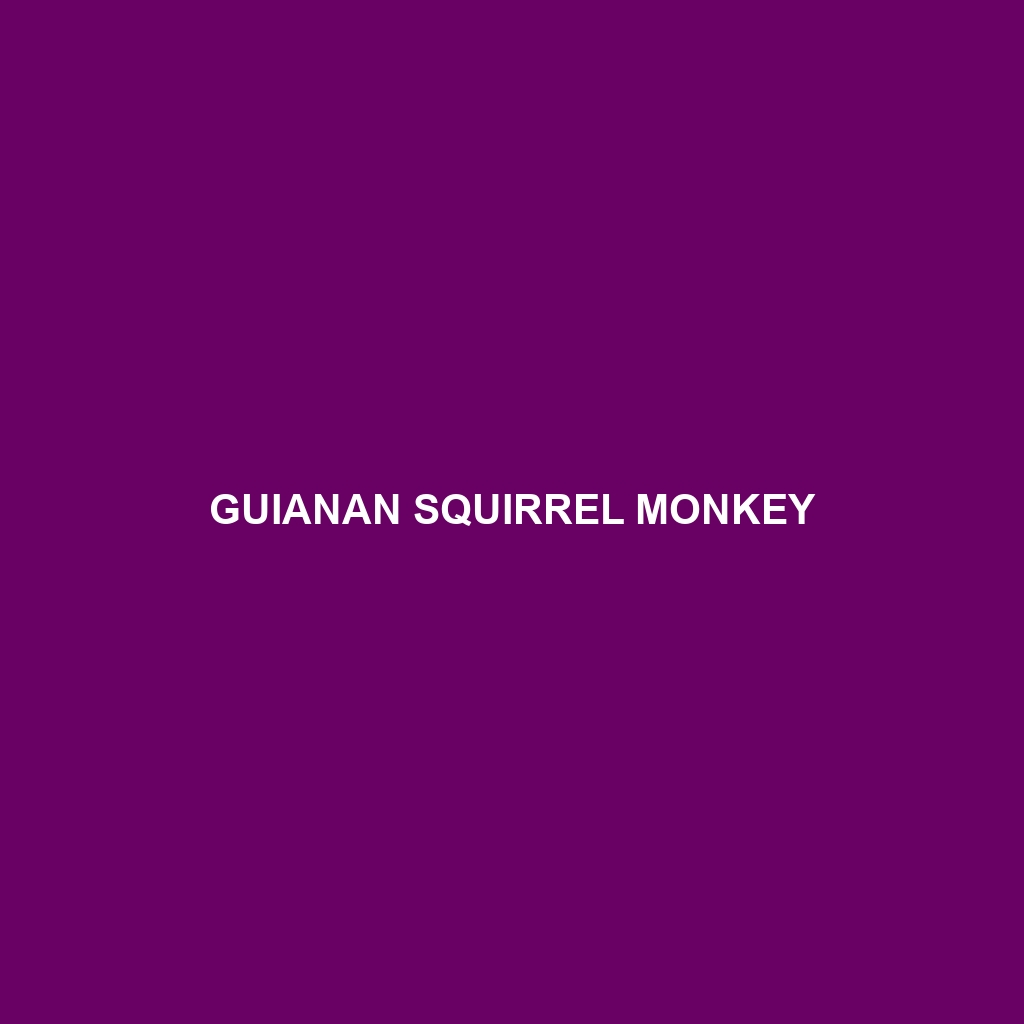Description of the Guianan Squirrel Monkey
Common Name: Guianan Squirrel Monkey
Scientific Name: Saimiri sciureus
Habitat: The Guianan Squirrel Monkey is primarily found in the lush tropical rainforests of South America, specifically in countries such as Suriname, French Guiana, Brazil, and portions of Guyana. These monkeys thrive in lowland forests and are often spotted near rivers and swampy areas, which provide ample food sources and shelter from predators.
Physical Characteristics: Guianan Squirrel Monkeys are small primates, typically weighing between 1.4 to 2.5 kg (3 to 5.5 lbs) and measuring about 40 to 50 cm (16 to 20 inches) in length, excluding their long tails which can span up to 60 cm (24 inches). Their fur is predominantly yellowish-brown with a contrasting dark face, large expressive eyes, and a distinctive white patch on the cheeks. Their agile bodies and long limbs are adapted for a life in the trees, allowing them to navigate the dense canopies with ease.
Behavior: Known for their lively and social nature, Guianan Squirrel Monkeys live in groups that can range from 10 to 50 individuals. These troops are often playful, engaging in grooming, vocalizations, and acrobatic displays. They are diurnal, meaning they are most active during the daytime, and their social structure is matrilineal, where females typically have a dominant role. Their behavior includes foraging together for food, which strengthens their community bonds.
Diet: The diet of the Guianan Squirrel Monkey consists mainly of fruits, nuts, seeds, flowers, and insects, making them omnivorous. They are particularly fond of ripe fruits such as figs and berries, which are abundantly found in their rainforest habitat. Their foraging habits play a crucial role in seed dispersal, contributing to the health of their ecosystem.
Reproduction: Guianan Squirrel Monkeys have a seasonal breeding pattern, typically occurring between February and June. After a gestation period of about 150 to 170 days, females give birth to a single infant, which is carried by the mother for several months. Offspring are nursed for up to six months and begin to explore their environment early on, learning important survival skills from their mothers and the troop.
Conservation Status: The Guianan Squirrel Monkey is currently listed as “Least Concern” according to the IUCN Red List; however, they face threats from habitat destruction due to logging and agricultural expansion. Conservation efforts are crucial to protect their natural habitat and ensure the species does not become endangered in the future.
Interesting Facts: One fascinating fact about the Guianan Squirrel Monkey is their sharp cognitive abilities; they are known to use tools and exhibit complex problem-solving skills. Additionally, their vocal range includes a variety of calls, which helps maintain social cohesion within their groups. Their small size and playful behavior make them a popular species for ecotourism and wildlife observation.
Role in Ecosystem: Guianan Squirrel Monkeys play a vital role in their ecosystem as seed dispersers, contributing significantly to forest regeneration and diversity. Their feeding habits help in maintaining the balance of plant populations, and they serve as prey for larger predators, thereby supporting the food web. Their presence is a key indicator of the health of rainforest habitats, underscoring the need for conservation efforts.
